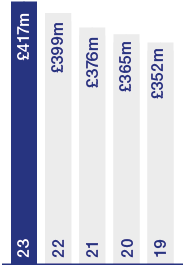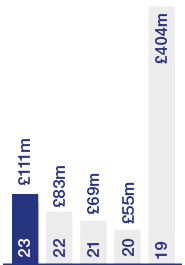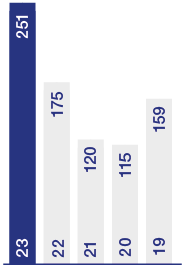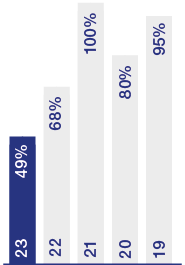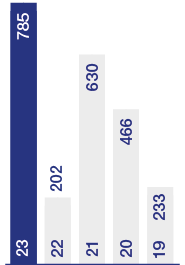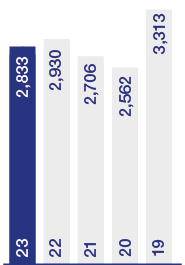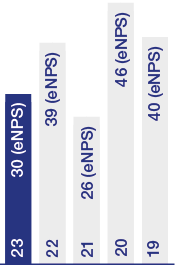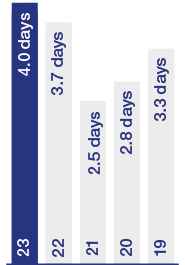
Annual Report and Accounts for the year ended 31 December 2023
Group strategic priorities
The Group set a medium-term strategy in 2021 to grow the size of the business through a 40% increase in capital employed to over £500m and a targeted focus on three key markets: Industrial & Logistics (I&L), Residential and Urban Development, while maintaining ROCE within a 10-15% range.
Our key metric of capital employed has risen to £417m (2022: £399m), and our ROCE at 9.9%, when rounded, was within our targeted range of 10-15%. Over the last two years we have delivered a ROCE of 10.8% p.a. which we believe to be a very credible performance given the decline in commercial property and land values of 22.1% and 8.6% respectively, from their mid-2022 peaks. We maintain our belief that we can achieve our main medium-term target of £500m capital employed, whilst continuing to generate attractive returns.
Key Strategic Pillars for 2023
Our strategy is shaped by four key strategic pillars and focuses on three long term markets:
Safety and Environment
We aim to be the safest place to work in our markets and be respectful to our environment
Growth
Grow capital employed to £500m by investing in our three key markets
Delivery
Adopt emerging working practices, investing and collaborating to deliver our operational targets
People
Open, progressive, high performing business governed by clear objectives which engages a diverse range of talent
Long-term Markets
Industrial & Logistics
Residential
Urban Development
Value Delivery
Property Development & Investment
Land Promotion
Home Building
Construction
Returns
Grow Capital Employed to over £500m + Target ROCE 10–15% +
Maintain a progressive dividend policy
Responsible Approach
People Strategy + ESG:
Risk
Optimum gearing of 10–20% + minimum 65% committed development
programme pre-let/pre-sold
OUR KEY PERFORMANCE INDICATORS
Key to Strategic Pillars
Key to Group Risks
1 Safety
2 Environmental & climate change
3 Economic
4 People & culture
5 Funding
6 Cyber
7 Pensions
8 Construction contracts
9 Property assets
10 Property development
11 Land sourcing
12 Land demand
13 Political
14 Housebuilding
